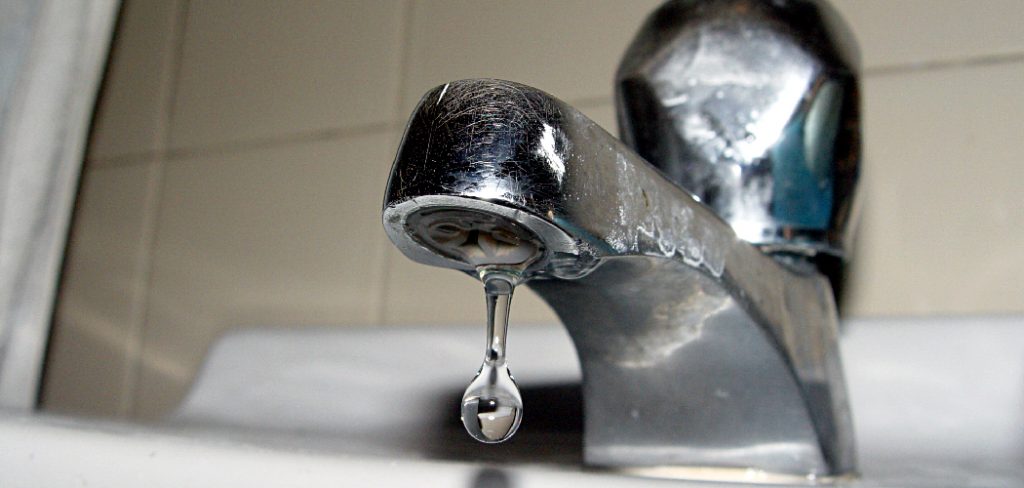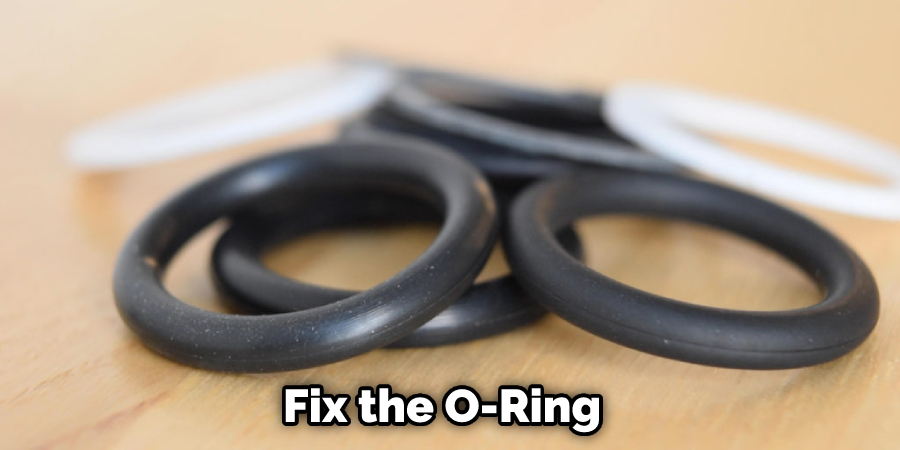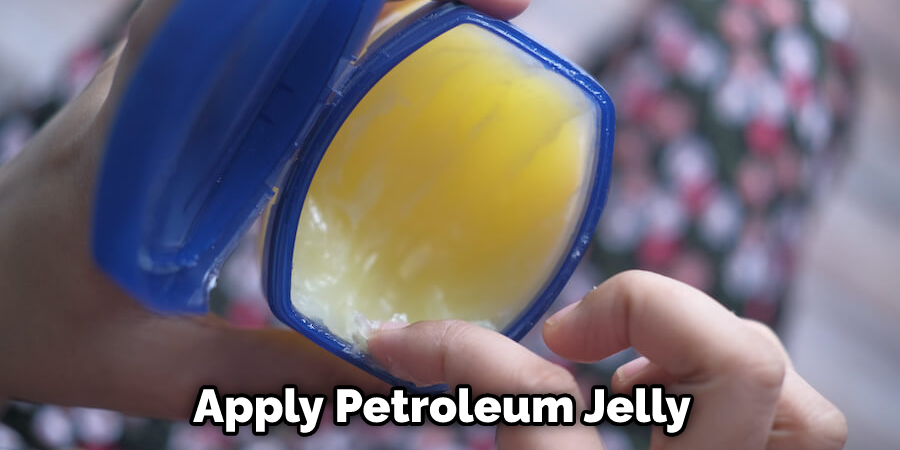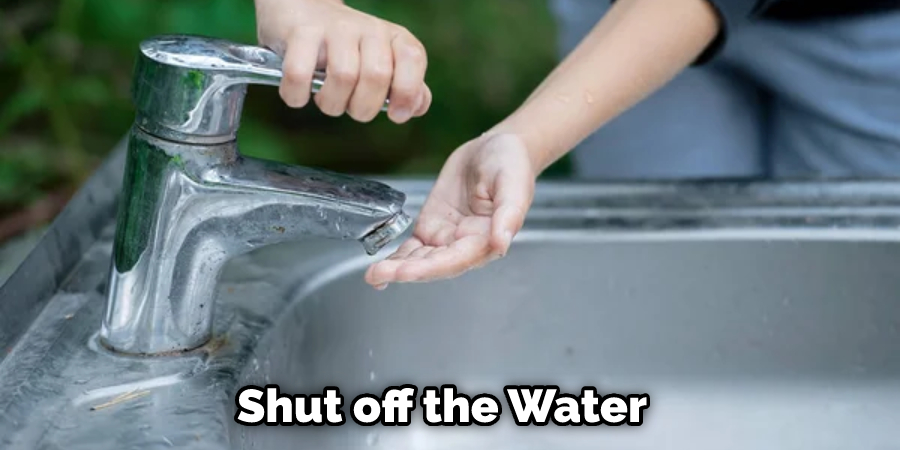If you’ve ever had a squeaky faucet, you know how frustrating it can be. It seems like every time you turn the water on. The noise starts again. But don’t worry, there is a way to fix it.

In this blog post, we will walk you through the steps on how to fix a squeaky faucet. So, if your faucet has been driving you crazy, keep reading!
Summary: This post will provide DIY tips on how to fix a squeaky faucet. From using plumbers putty, to tightening packing nuts and fixing pop-up stoppers, this blog post will give you the necessary steps to make sure your faucet is no longer making that annoying noise.
Learn how to use petroleum jelly, WD-40 and rubber stoppers to help with the repair process, as well as how to tackle the O-ring and P-trap if needed.
What Causes a Squeaky Faucet?
The most common cause of a squeaky faucet is a mineral buildup on the valve seat. Over time, water leaves deposits of calcium and other minerals on the valve seat. These deposits can build up and cause the valve to become less smooth, which in turn causes the telltale squeak when you turn on the water.
Another potential cause of a squeaky faucet is a loose washer. The washers are responsible for creating a tight seal between the moving parts of the faucet, and if they become loose, they can create a lot of noise.
Luckily, both of these problems are relatively easy to fix. With time and patience, you can have your squeaky faucet fixed in no time!
8 Effective Methods on How to Fix a Squeaky Faucet
Method 1: Use Plumbers’ Putty
You can use plumbers’ putty to silence a squeaky faucet in your kitchen or bathroom. All you need to do is apply the putty to the base of the faucet and secure it. Then, turn on the water and see if the putty has stopped the noise. Ensure the putty is dry before using it, so it doesn’t become a breeding ground for mold or mildew.
Method 2: Fix the O-Ring
If your faucet has an O-ring that is damaged, this can cause the faucet to squeak. You will need to replace the O-ring to fix the problem.

First, you will need to turn off the water to your faucet. You can turn the knob to the “off” position. Next, you will need to remove the handle of the faucet. This is usually done by unscrewing the screw under the handle. Once the handle is removed, you can see the O-ring. Then, remove the old O-ring and replace it with a new one. Finally, screw the handle back on and turn the water back on.
Method 3: Tighten the Packing Nut
If your faucet is leaking, this can often be caused by a loose packing nut. To fix this, you will need to tighten the packing nut. Then, check to see if the leak has stopped. If it has not, you may need to replace the washer. Locate the packing nut. This is a small, round nut that is located under the handle of the faucet.
Use a wrench to tighten the packing nut. Be sure not to overtighten it, as this can cause damage to the faucet.
Once you have tightened the packing nut, turn on the water to see if the leak has stopped. If the leak continues, you may need to replace the washer. To do this, shut off the water and remove the faucet’s handle.
Method 4: Apply Petroleum Jelly
If your faucet is still squeaking after you’ve tried the above methods, you can try applying petroleum jelly to the problem area. Petroleum jelly will help to lubricate the moving parts and quiet the noise.
To do this, apply a small amount of petroleum jelly to a cotton swab or rag and rub it into the area where the faucet is squeaking. You may do this a few times to get the desired results, but eventually, the noise should disappear.

Method 5: Use Some WD-40
Some people find it helpful to use WD-40 to silence a squeaky faucet. If you have a kitchen sink with a sprayer attachment, you must disconnect the hose from the faucet before applying WD-40. Once you have sprayed WD-40 onto the source of the squeak, reattach the hose and turn on the water. Test your faucet to see if the WD-40 effectively silences the squeak.
Method 6: Fix the Pop-Up Stopper
If your bathroom sink has a pop-up stopper, this can often be the squeak source. The pop-up stopper is attached to the drain with a rod, and over time, this connection can become loose, causing the stopper to squeak when it moves.
To fix this, first, remove the pop-up stopper by unscrewing the knob on the top of the drain. Then, look at the connection between the rod and the stopper. If it is loose, tighten it with a wrench. You may also need to adjust the length of the rod to stop the stopper from moving too much.
Once you have tightened the connection and changed the rod, replace the pop-up stopper and screw the knob back into place.
Method 7: Fix the P-Trap
If your sink is still squeaking after you’ve tried the above methods, the problem may be with the P-trap. The P-trap is a U-shaped pipe that is located under the sink. Over time, the joints in the P-trap can become loose, causing the pipe to squeak when water runs through it.
To fix this, shut off the water supply to the sink. Then, unscrew the P-trap from the drainpipe and remove it from under the sink. Apply the plumber’s putty to the threads on the P-trap and screw it back into place. Turn on the water supply and test the sink to see if the squeak is gone.

Method 8: Use Little Rubber Stoppers
If your faucet is still squeaking, you can try using little rubber stoppers. This is a temporary fix, but it may help to silence the noise until you can get a more permanent solution.
To do this, simply place a rubber stopper over the area where the faucet is squeaking. Then, use a hammer to tap the stopper into place lightly.
If the squeak is gone, leave the rubber stopper in place. If it’s still squeaking, you may need to try another method.
These are some of the most common methods to fix a squeaky faucet. If you have tried all of the above techniques and the problem persists, you may need to call a plumber.
How to Avoid Having a Squeaky Faucet in the Future?
If you want to avoid having a squeaky faucet in the future, there are a few things you can do.
First, make sure to clean your faucet regularly. Over time, dirt and grime can build up and cause your faucet to squeak.
Second, be careful not to over-tighten the handles. Over-tightening can damage the internals of your faucet and cause it to squeak.
Finally, if your faucet starts to squeak, don’t ignore it! Address the problem right away by cleaning the faucet and tightening the handles. Ignoring a squeaky faucet will only make the problem worse.
Safety Precautions You Need to Know Before Fixing a Squeaky Faucet

- Try not to use too much force when fixing the faucet. This can damage the pipes and cause more problems.
- Ensure you have turned off the water supply before working on the faucet. Otherwise, you could flood your home.
- Never try to fix a faucet without the proper tools. This could lead to injury or further damage to the fixture.
- Be very careful when working with plumbing fixtures. They are often delicate and require special care.
- If you are unsure how to fix the problem, it is always best to call a professional plumber.
- Be sure to read all the instructions before beginning the repair. This will help you avoid any mistakes.
- Make sure you have all the parts and tools you need before starting the repair. This will save you time and frustration.
- Take your time when fixing the problem. Rushing could lead to further damage or even injury.
- Always turn off the water supply before working on the plumbing. This will prevent any accidents.
- When in doubt, it is always best to call a professional plumber. They will have the experience and knowledge to fix the problem correctly.
- Never try to repair a plumbing fixture without the proper tools or training. This could lead to serious injury or damage to your home.
Conclusion
A squeaky faucet is a common problem that can be fixed with a little bit of WD-40 and some patience. Or, if your faucet is leaking or squeaking, it’s a good idea to replace the O-ring and washer. You can try all the methods in this article, but if the problem persists, it’s best to call a professional plumber.
This will fix the problem and help your faucet run smoothly for years to come. Have you tried this method to repair before? What other tips do you have on how to fix a squeaky faucet?
